Here simulator data attached, response shape with and without electrical damping. With >10db peak no wonder it's easy to hear a difference.Just few minutes ago I did fun experiment with closed box bass. If I just drum the cone with my bare hands there is distinct boom to the sound, like a drum, which also blooms audibly if I drum the baffle. This was driver unhooked, and there is no passive impedance network. Now, shorting the terminals, or connect it to an low impedance voltage amplifier, the boomines goes away. Use the other hand to drum and short the driver with another and it's very easy to notice. This is electrical damping, so for a boxed speaker it seems to be better to maintain electrical damping at resonance.
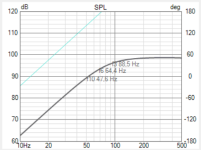
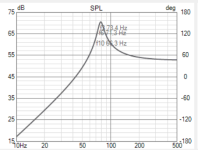
Yeah if there was adjustable "damping factor" one can tailor the resonance, some home hifi systems that are run with relatively low power could use just a a series resistor to manipulate this, especially if there is active crossover filtering before the amp, in addition.Imagine that. An amplifier with a scaled output impedance control. Go from "Voltage source" to "Current source" and anywhere in between.
Here example of 4, 8 and 16 ohm series resistor would do, and for completeness first image is without series resistor same as above, so with voltage amplifier. I need to do the hand drumming test with resistor between driver terminals for fun to hear whether few ohms already affect drumming sound. IOW whether 0.5 or 0.7, or 1 + system Q makes my drum sound change 😀

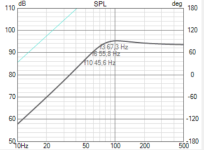
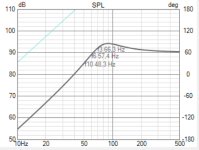
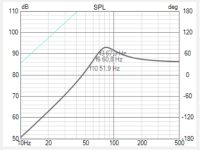
The linear errors are only half of the story as these can be corrected quite easily (if we assume the loudspeaker to be linear).
There are also improvements on the non-linear distortion. As Esa's book points out on pretty much every other page. Current drive has the main advantage that you don't have the non-linear translation from voltage to current (via the impedance). Since loudspeakers are current controlled devices, this translation induces distortion. Whether this really is the dominant source of distortion is strongly dependent on the signal you use and the driver you use.
Henrik Schneider wrote a paper about this and tried to quantify the effects of current driven loudspeakers: https://aes2.org/publications/elibrary-page/?id=17716. The devices are eq'd to identical frequency response and there are clear improvements for loudspeakers with strong non-linear Le(x). Low frequency area is cut off but my presumption says that Kms(x) is more dominant there.
Eq'ing the resonance is actually quite tricky because it depends on the current operating state (position) of the loudspeaker. Since Kms is strongly dependent on x, it is not so easily corrected for. A better solution would be to either avoid useing the driver near its resonance (not possible for subs) or to use MFB (not possible for mids and higher). https://rmsacoustics.nl/audiodesign.html shows good results with MFB (and sounds fantastic IRL).
There are also improvements on the non-linear distortion. As Esa's book points out on pretty much every other page. Current drive has the main advantage that you don't have the non-linear translation from voltage to current (via the impedance). Since loudspeakers are current controlled devices, this translation induces distortion. Whether this really is the dominant source of distortion is strongly dependent on the signal you use and the driver you use.
Henrik Schneider wrote a paper about this and tried to quantify the effects of current driven loudspeakers: https://aes2.org/publications/elibrary-page/?id=17716. The devices are eq'd to identical frequency response and there are clear improvements for loudspeakers with strong non-linear Le(x). Low frequency area is cut off but my presumption says that Kms(x) is more dominant there.
Eq'ing the resonance is actually quite tricky because it depends on the current operating state (position) of the loudspeaker. Since Kms is strongly dependent on x, it is not so easily corrected for. A better solution would be to either avoid useing the driver near its resonance (not possible for subs) or to use MFB (not possible for mids and higher). https://rmsacoustics.nl/audiodesign.html shows good results with MFB (and sounds fantastic IRL).
"You can't download it". Thanks for the $33 link... I mean I'd like to have read it as I'm interested, but not $33 interested. Accepted their cookies for nothin'...
Its aes, for 100 bucks (50 for students), you have the entire library worth of papers. Well worth the price imo.
In reality the bump is a lot less. One of the reasons simulation assumes no linearities i guess. Around resonance current drive increases distortion. Kms Cms acts like a compressor for current drive. It can be seen if you compare current drive responses low signal level vs high level.
I am considering designing and making a solid state current drive amplifier. It would appear with early simulations that I can get away with a less expensive power supply because compared to voltage driver the power supply doesn't need as much current delivery. Anyone else have a similar experience with designing current drive amplifiers.
For the same output SPL current or voltage drive no difference in power supply.I am considering designing and making a solid state current drive amplifier. It would appear with early simulations that I can get away with a less expensive power supply because compared to voltage driver the power supply doesn't need as much current delivery. Anyone else have a similar experience with designing current drive amplifiers.
The Q is determined by the Qms. If you include nonlinearities, the Kms/Mms/Rms and BL are the ones that influence the peak. Kms/Mms defines the location, Rms/BL define the height.In reality the bump is a lot less. One of the reasons simulation assumes no linearities i guess. Around resonance current drive increases distortion. Kms Cms acts like a compressor for current drive. It can be seen if you compare current drive responses low signal level vs high level.
This is the biggest reason correcting for the peak is really difficult. The advantage is also limited here because Kms(x) is of big influence and Le is of neglegible influence.
For the same output SPL current or voltage drive no difference in power supply.
Yeah but the response is different 😉
I do agree though.
- Home
- Amplifiers
- Chip Amps
- Help to understand "current drive"